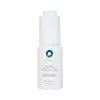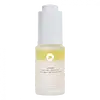What's inside
What's inside
 Key Ingredients
Key Ingredients

 Benefits
Benefits

 Concerns
Concerns

 Ingredients Side-by-side
Ingredients Side-by-side

Water
Skin ConditioningTriheptanoin
Skin ConditioningC13-16 Isoparaffin
SolventOlea Europaea Fruit Oil
MaskingButylene Glycol
Humectant3-O-Ethyl Ascorbic Acid
Skin ConditioningDicaprylyl Ether
EmollientSqualane
EmollientPropanediol
Solvent1,2-Hexanediol
Skin ConditioningRosa Damascena Flower Extract
MaskingZingiber Officinale Root Extract
MaskingCaprylic/Capric Triglyceride
MaskingTocopheryl Acetate
Antioxidant4-Butylresorcinol
AntioxidantHelianthus Annuus Seed Oil
EmollientCaprylhydroxamic Acid
Aminomethyl Propanol
BufferingGlycereth-6 Tricocoate
EmollientPaeonia Officinalis Flower Extract
TonicBeta-Carotene
Skin ConditioningDaucus Carota Sativa Root Extract
Skin ConditioningDaucus Carota Sativa Seed Oil
EmollientCurcuma Longa Root Extract
Masking2-Aminobutanol
BufferingAscorbyl Palmitate
AntioxidantWater, Triheptanoin, C13-16 Isoparaffin, Olea Europaea Fruit Oil, Butylene Glycol, 3-O-Ethyl Ascorbic Acid, Dicaprylyl Ether, Squalane, Propanediol, 1,2-Hexanediol, Rosa Damascena Flower Extract, Zingiber Officinale Root Extract, Caprylic/Capric Triglyceride, Tocopheryl Acetate, 4-Butylresorcinol, Helianthus Annuus Seed Oil, Caprylhydroxamic Acid, Aminomethyl Propanol, Glycereth-6 Tricocoate, Paeonia Officinalis Flower Extract, Beta-Carotene, Daucus Carota Sativa Root Extract, Daucus Carota Sativa Seed Oil, Curcuma Longa Root Extract, 2-Aminobutanol, Ascorbyl Palmitate
Water
Skin ConditioningTriheptanoin
Skin ConditioningC13-15 Alkane
SolventButylene Glycol
HumectantSqualane
EmollientPropanediol
SolventDicaprylyl Ether
EmollientVaccinium Myrtillus Seed Oil
Skin Conditioning1,2-Hexanediol
Skin ConditioningCyclodextrin
AbsorbentLecithin
EmollientLysolecithin
EmulsifyingEuterpe Oleracea Fruit Extract
Caprylhydroxamic Acid
Ananas Sativus Fruit Extract
Skin ConditioningTranexamic Acid
Astringent3-O-Ethyl Ascorbic Acid
Skin ConditioningNiacinamide
SmoothingPotassium Azeloyl Diglycinate
Skin ConditioningPhenethyl Alcohol
MaskingBisabolol
MaskingTocopheryl Acetate
AntioxidantCaprylyl Glycol
EmollientPhytic Acid
Water, Triheptanoin, C13-15 Alkane, Butylene Glycol, Squalane, Propanediol, Dicaprylyl Ether, Vaccinium Myrtillus Seed Oil, 1,2-Hexanediol, Cyclodextrin, Lecithin, Lysolecithin, Euterpe Oleracea Fruit Extract, Caprylhydroxamic Acid, Ananas Sativus Fruit Extract, Tranexamic Acid, 3-O-Ethyl Ascorbic Acid, Niacinamide, Potassium Azeloyl Diglycinate, Phenethyl Alcohol, Bisabolol, Tocopheryl Acetate, Caprylyl Glycol, Phytic Acid
Ingredients Explained
These ingredients are found in both products.
Ingredients higher up in an ingredient list are typically present in a larger amount.
1,2-Hexanediol is a synthetic liquid and another multi-functional powerhouse.
It is a:
- Humectant, drawing moisture into the skin
- Emollient, helping to soften skin
- Solvent, dispersing and stabilizing formulas
- Preservative booster, enhancing the antimicrobial activity of other preservatives
You might know this ingredient as Ethyl Ascorbic Acid, a more stable version of ascorbic acid.
Like other types of vitamin C, this ingredient has many benefits including reducing wrinkles, skin soothing, dark spot fading, and fighting against free radicals.
3-O-Ethyl Ascorbic Acid interferes with the process of skin darkening, helping to reduce hyperpigmentation. It also encourages the skin to produce more collagen.
Once applied, 3-O-Ethyl Ascorbic Acid is converted to Vitamin C deeper in the skin's layers. This process is slow but makes this ingredient more tolerable for skin.
The optimum pH range for this ingredient is 4 - 5.5
Learn more about 3-O-Ethyl Ascorbic AcidButylene Glycol (or BG) is used within cosmetic products for a few different reasons:
Overall, Butylene Glycol is a safe and well-rounded ingredient that works well with other ingredients.
Though this ingredient works well with most skin types, some people with sensitive skin may experience a reaction such as allergic rashes, closed comedones, or itchiness.
Learn more about Butylene GlycolCaprylhydroxamic Acid is a chelating agent.
Chelating agents help prevent metal ions from binding to other ingredients. This helps prevent unwanted reactions and effects from using the product.
Caprylhydroxamic Acid is often used with natural antimicrobial products as an alternative to preservatives.
Learn more about Caprylhydroxamic AcidDicaprylyl Ether is created from caprylic acid. It is a texture-enhancer and emollient.
As an emollient, Dicaprylyl Ether is non-comedogenic. It helps soften and smooth the skin by creating a barrier on top. This barrier helps trap moisture in, helping to hydrate the skin.
Dicaprylyl Ether gives a non-greasy feel and better spreadability to products.
Learn more about Dicaprylyl EtherPropanediol is an all-star ingredient. It softens, hydrates, and smooths the skin.
It’s often used to:
Propanediol is not likely to cause sensitivity and considered safe to use. It is derived from corn or petroleum with a clear color and no scent.
Learn more about PropanediolSqualane is an emollient that helps the skin hold onto moisture. It's an oily liquid that occurs naturally in certain types of fish and plant oils.
Because squalane boosts hydration in the skin, it also comes with plenty of benefits: it is an antioxidant and can help fight free radicals and skin damage. Squalane is also found to have a detoxifying effect when applied.
Squalane comes from squalene, which occurs naturally within the sebum of our skin. It is one of the oils our skin produces to keep itself hydrated. Squalane is the hydrogenated version of squalene and has a longer shelf life.
Research shows that squalane is non-irritating (even at 100% concentration).
In general, it's a fantastic ingredient. It does a great job at hydrating the skin, and it's suitable for those with sensitive skin.
The source of squalane may impact malassezia / fungal acne. This is because olive oil derived squalane can contain impurities such as fatty acids and plant waxes. Sugarcane derived squalane is recommended for anyone with malassezia concerns.
Is squalane vegan?
This depends on the source. Squalane can be derived from both plants and animals. Most squalane used in skincare comes from plants.
Please note: the source of squalane is only known if disclosed by the brand. We recommend reaching out to the brand if you have any questions about their squalane.
Read more about squalene with an "e".
Is squalane an oil?
Squalane is often called an oil, but it’s technically not; it’s a hydrocarbon, meaning it’s only made of carbon and hydrogen, unlike true oils which are triglycerides made of fatty acids and glycerol.
The term “oil-free” isn’t regulated, so companies can define it however they want. Some exclude all oils, while others just avoid mineral oil or comedogenic oils.
While some people avoid oils thinking they cause breakouts, the right kind of oil (or oil-like ingredient like squalane) can actually help balance and hydrate your skin. It’s worth testing out simple oils or squalane to see what works best for your skin.
Learn more about SqualaneTocopheryl Acetate is AKA Vitamin E. It is an antioxidant and protects your skin from free radicals. Free radicals damage the skin by breaking down collagen.
One study found using Tocopheryl Acetate with Vitamin C decreased the number of sunburned cells.
Tocopheryl Acetate is commonly found in both skincare and dietary supplements.
Learn more about Tocopheryl AcetateWe don't have a description for Triheptanoin yet.
Water. It's the most common cosmetic ingredient of all. You'll usually see it at the top of ingredient lists, meaning that it makes up the largest part of the product.
So why is it so popular? Water most often acts as a solvent - this means that it helps dissolve other ingredients into the formulation.
You'll also recognize water as that liquid we all need to stay alive. If you see this, drink a glass of water. Stay hydrated!
Learn more about Water